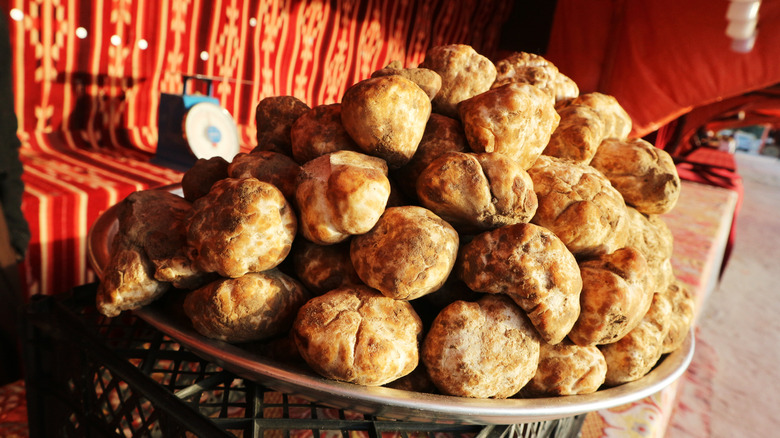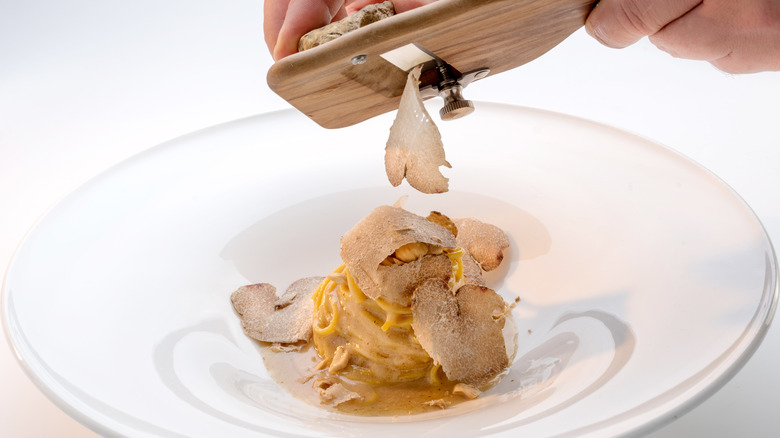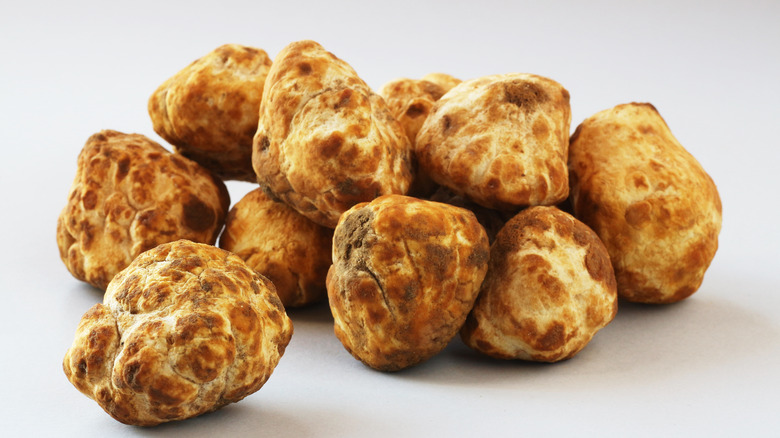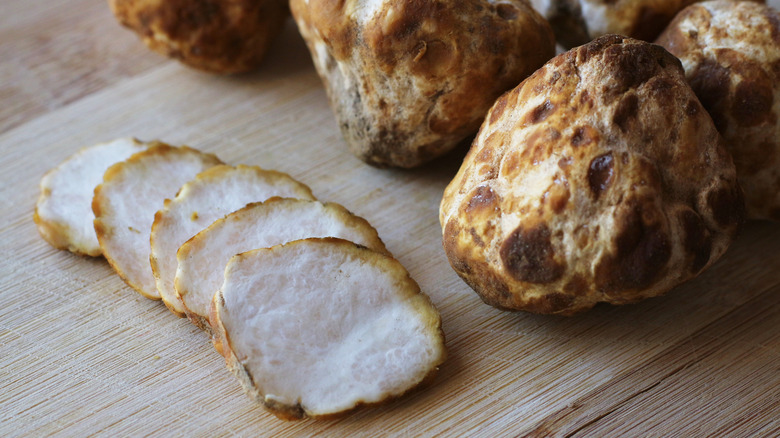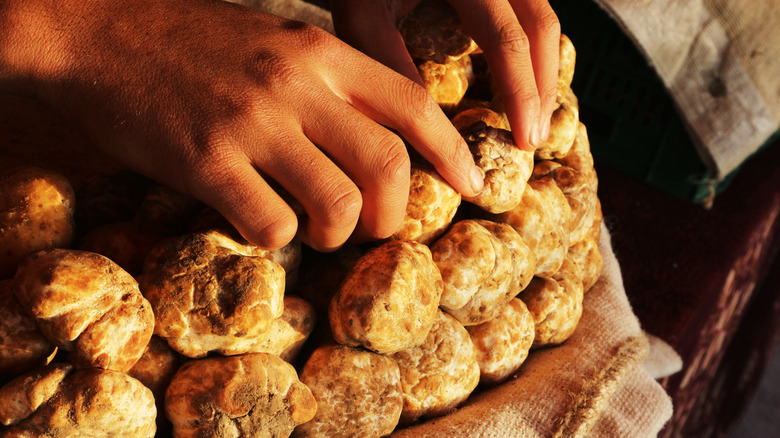What Are Desert Truffles And How Do They Compare To Other Varieties?
Those of us who view the deserts of the Middle East as hot, dry, and barren may have Hollywood to thank for that perception. Because while it may be true that temperatures can reach as high as 130 degrees Fahrenheit, deserts do get some amount of rainfall or about 10 inches a year. And it is that rainfall that acts as a catalyst for desert truffles to grow in the arid regions of East and North Africa as well as the Middle East.
Desert truffles have been enjoyed for thousands of years. In fact, some people believe the biblical "manna from heaven" could have well been the desert truffle. The delicacy was also referenced in Greek texts by writers like Plato and Aristotle, and they were prized by the ancient Romans, who viewed them as aphrodisiacs.
But as one truffle hunter told Arab News, because yields rely entirely on how much rain has fallen during a given period, it is possible for there to be no truffles for up to two years at a stretch.
Why desert truffles are nothing like European truffles
They are considered the "diamonds" of the culinary world, and because they are so rare, truffles can cost tens of thousands of dollars a pound, particularly when they are the subject of bidding wars at charity auctions. Alba white truffles are especially pricey, because they cannot be farmed, and they are usually found in the forest by trained pigs or dogs, along with their human keepers.
But while desert truffles have the same English name as their European cousins, they aren't as closely related to the Italian Alba white truffle or the black French Périgord truffle as it might appear. All the European truffles we are familiar with — including the seasonal black and white truffles — belong to the "Tuber" plant family, which are not normally cooked. European truffles are treated as a condiment in that they are often used in small quantities and they are shaved onto the dishes they are served.
While desert truffles can also be rare and difficult to find, they belong to another branch of the plant family entirely and are genetically closer to everyday mushrooms.
Desert truffles aren't actual truffles
Known as zubaidi, fagaa, or terfez, desert truffles grow among the roots of the sunrose succulent, with which they have a symbiotic relationship. And unlike European truffles which are fond of hiding underground, desert truffles tend to break through the surface when they are ready to be harvested — they show up as lumps, making them relatively easier to find. Desert truffles are classified under the plant family Terfezia, so even though they have the look of a dusty potato, they are scientifically considered to be fungi and are enjoyed in the same way we eat our mushrooms.
There are around 30 different types of desert truffle, but only three types are generally consumed: the prized white truffle or zubaidi, the red truffle, and the black desert truffle or khula, with black being the most difficult to find, and the zubaidi being the most prized.
While scientists in Israel have been able to cultivate the desert truffle commercially, that approach has yet to be implemented widely — and it's unclear when or if it'll ever be. In theory, that could help make it more readily available.
Preparing and cooking desert truffles
Before they are eaten, desert truffles need to be properly and thoroughly cleaned, since they can be craggy, and their crevices hold a significant amount of sand. But once they are cleaned and ready to go, desert truffles can be consumed in different ways — they can be eaten raw, or they can be grilled over hot coals and eaten with rice. Others use it as a form of traditional medicine, to treat eye infections and as an aphrodisiac.
As Emirati chef Ali Yazdi told Gulf News: "We actually use [desert truffles] in stews or dishes like machboos, kabsa, or any one-pot dishes. When you cook with it, [you] must treat it like any other protein product, such as meat or seafood. You have to clean it well because they are found beneath the soil. Then you have to chop it into bite-sized pieces."
Once they are chopped up, these truffles are boiled for up to 20 minutes and can then be cooked or mixed with spices or enjoyed in a salad. Desert truffles are said to have a mild, sweet taste and an aroma that is reminiscent of Morel mushrooms, which is also quite subtle.
Where desert truffles can be purchased
Desert truffles may not be as rare as their distant European cousins, but they aren't as commonplace as their fans may like, thanks to a combination of climate change and political strife. Rain, particularly the kind needed to grow the desert truffle isn't predictable — and it has become dangerous for truffle hunters in regions like Iran, Libya, Morocco, and Tunisia that have seen unrest.
So when they are available, desert truffles can be purchased in Kuwait from a dedicated souk — Arabic for market — in the al-Rai district, which is an industrial zone. If you are in the UAE, know that there are listed desert truffle suppliers that are willing to sell the fungi in bulk and wholesale. A number of retailers also list the desert truffle for purchase online.
Desert truffles are usually sold by the kilo and can cost between $22-65 per unit. At its priciest, desert truffles can cost as much as $237 per kilo — all depending on the quality of the year's crop.
